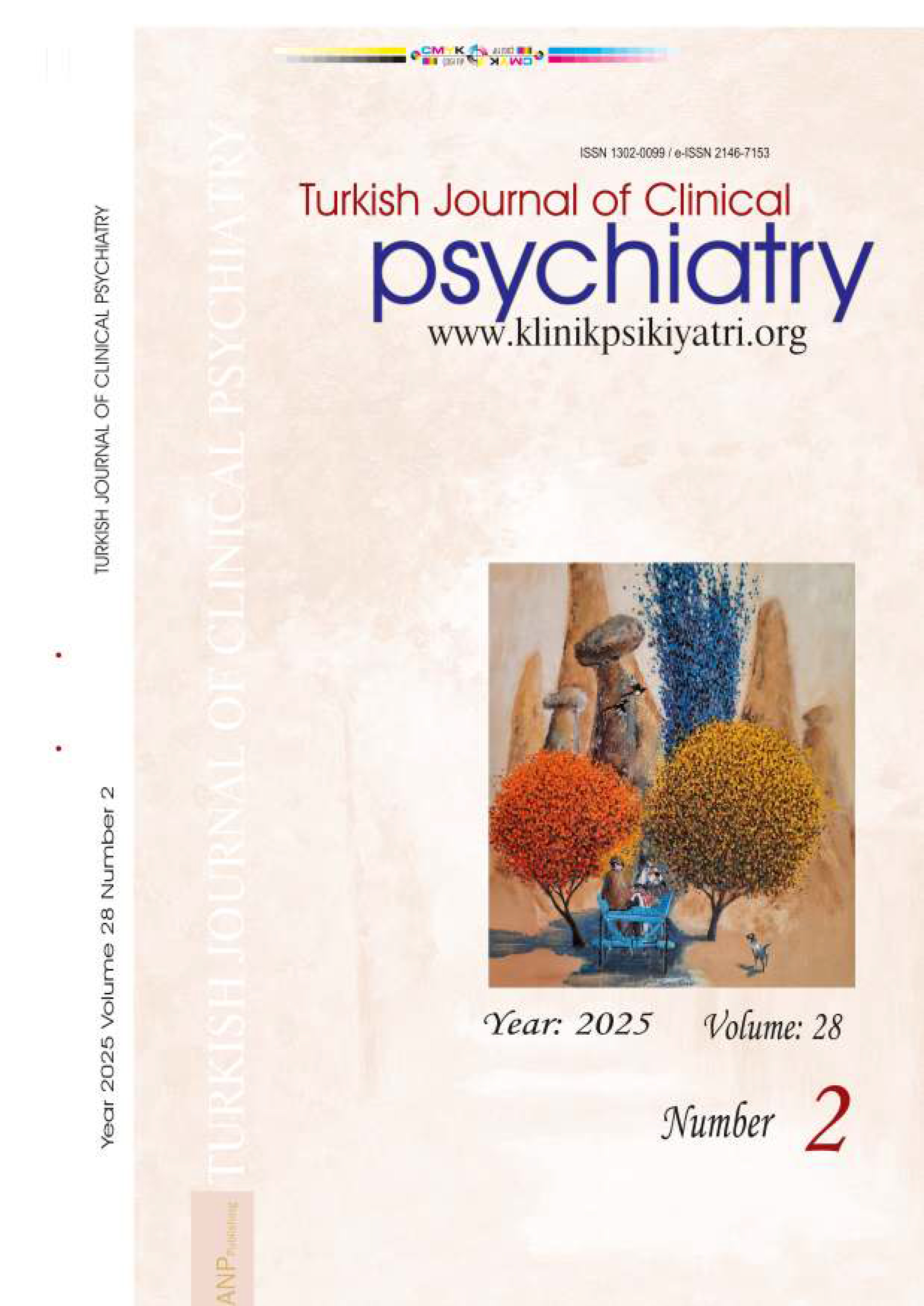





The frequency of OPRK1 G36T and OPRM1 A118G opioid receptor gene polymorphisms in heroin-dependent individuals and non-dependent healthy subjects in Turkey
Gunnur Demircan1, Tuğçe Toker Uğurlu2, Gülizar Zengin3, Ata Onur Kepenek4, Selim Can Berk5, Damla Saygin5, Idea Nehir Ozliman5, Figen Ateşci6, Demet Akın71Department of Medical Biology and Genetics, Demiroglu Bilim University, Faculty of Medicine, Istanbul, Turkey2Department of Psychiatry, Pamukkale University, Faculty of Medicine, Denizli, Turkey
3Department of Psychiatry, Burdur State Hospital, Burdur, Turkey
4Department of Psychiatry, Istanbul University, Faculty of Medicine, Istanbul, Turkey
5Bahcesehir University, Faculty of Medicine, Istanbul, Turkey
6Self-employed Psychiatrist, Denizli, Turkey
7Department of Pharmacology, Bahcesehir University, Faculty of Medicine, Istanbul, Turkey
INTRODUCTION: Polymorphisms of the Mu opioid receptor (MOR) gene (OPRM1), which encodes for the primary action site of heroin, have also been found to be associated with heroin addiction. The aim of this study was to investigate the relationships between heroin addiction and G36T OPRK1 and A118G OPRM1 receptor gene polymorphisms in a male population in Turkey.
METHODS: 102 male patients with heroin use (without any other drug use) and 82 subjects without any history of opioid use were evaluated. The A118G and G36T SNPs on the MOR and Kappa opioid receptors (KOR) genes were assessed via TaqMan 5’-exonuclease allelic discrimination assays.
RESULTS: The mean duration of heroin use was 4.6±1.9 years. The G36T polymorphism and heterozygous genotype were both found to be more frequent in the patient group (OPRK1 gene). In the patient group, 79 (77.5%) patients had wild-type genotype and 23 (22.5%) patients had mutant genotype. In the control group, 76 (92.7 %) subjects had wild-type genotype and 6 (7.3 %) subjects had mutant genotype (p=0.005). Wild type allele frequency was determined to be 0.894 and mutant type allele frequency was 0.105. With regard to the A118G polymorphism, we found that there was no difference between groups in terms of genotype.
DISCUSSION AND CONCLUSION: Our findings support a considerable role for OPRK1 in opioid addiction; however, in conflict with most studies, we did not determine a relationship with A118G in Turkish subjects. We suggest that further studies should be conducted to ascertain the clinical implications of opioid gene polymorphisms in Turkey.
Türkiye'de eroin kullanım bozukluğu olan ve olmayan sağlıklı bireylerde OPRK1 G36T ve OPRM1 A118G opioid reseptör gen polimorfizmleri sıklığı
Gunnur Demircan1, Tuğçe Toker Uğurlu2, Gülizar Zengin3, Ata Onur Kepenek4, Selim Can Berk5, Damla Saygin5, Idea Nehir Ozliman5, Figen Ateşci6, Demet Akın71Demiroglu Bilim Üniversitesi Tıp Fakültesi, Medikal Biyoloji ve Genetik Ana Bilim Dalı, İstanbul2Pamukkale Üniversitesi Tıp Fakültesi, Psikiyatri Ana Bilim Dalı, Denizli
3Burdur Devlet Hastanesi, Psikiyatri Kliniği, Burdur
4İstanbul Üniversitesi Tıp Fakültesi, Psikiyatri Ana Bilim Dalı, İstanbul
5Bahçeşehir Üniversitesi Tıp Fakültesi, İstanbul
6Bağımsız Çalışan Psikiyatrist, Denizli
7Bahçeşehir Üniversitesi Tıp Fakültesi, Farmakoloji Ana Bilim Dalı, İstanbul
GİRİŞ ve AMAÇ: Eroinin birincil etki bölgesini kodlayan Mu opioid reseptörü (MOR) geninin (OPRM1) polimorfizmlerinin de eroin bağımlılığı ile ilişkili olduğu bulunmuştur. Bu çalışmanın amacı, Türkiye'de bir erkek popülasyonunda eroin bağımlılığı ile G36T OPRK1 ve A118G OPRM1 reseptör gen polimorfizmleri arasındaki ilişkinin araştırılmasıdır.
YÖNTEM ve GEREÇLER: Eroin kullanan (başka bir madde kullanmayan) 102 erkek hasta ve opioid kullanım öyküsü olmayan 82 kişi değerlendirildi. MOR ve Kappa opioid reseptörleri (KOR) genleri üzerindeki A118G ve G36T SNP'leri, TaqMan 5'-eksonükleaz alel ayrım deneyleri ile değerlendirildi.
BULGULAR: Ortalama eroin kullanım süresi 4,6±1,9 yıldı. G36T polimorfizmi ve heterozigot genotip hasta grubunda (OPRK1 geni) daha sık bulundu. Hasta grubunda 79 (%77,5) hasta yabani tip genotipe, 23 (%22,5) hasta ise mutant genotipe sahipti. Kontrol grubunda 76 (%92,7) kişi yabani tip genotipe, 6 kişi (%7,3) mutant genotipe sahipti (p=0,005). Yabani tip alel frekansı 0,894 ve mutant tip alel frekansı 0,105 olarak belirlendi. A118G polimorfizmi açısından gruplar arasında genotip açısından fark olmadığını tespit edildi.
TARTIŞMA ve SONUÇ: Bulgularımız, OPRK1'in opioid bağımlılığında önemli bir rol oynadığını desteklemektedir. Ancak, çoğu çalışmanın aksine, Türk deneklerde A118G ile herhangi bir ilişki tespit edilemedi. Türkiye'de opioid gen polimorfizmlerinin klinik etkilerinin belirlenmesi için daha fazla araştırma yapılması gerektiğini düşünüyoruz.
Manuscript Language: English
(951 downloaded)










